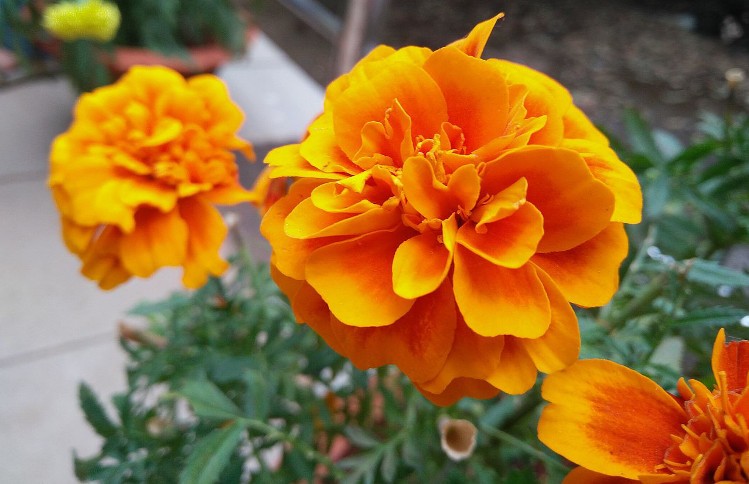Raquel RD Moreira a, Caio H Perego a, André G dos Santos a, Flávio Alexandre de Carvalho a, Carlos Cavaleiro b, Lígia Salgueiro b, Maria do Céu Sousa b, Mara Lane C Cardoso c, Juliana Cogo c, Celso V Nakamura c. Comunicación en forma de póster en el 9º Congreso de Fitoterapia de SEFIT – IX Jornada Farmacéutica de la Isla del Rey, Menorca, 18-21 de mayo de 2017
a UNESP-Univ. Estadual Paulista, Faculdade de Ciências Farmacêuticas de Araraquara, Araraquara, São Paulo, Brasil. b Universidade de Coimbra, Faculdade de Farmácia, Portugal c Universidade Estadual de Maringá, Maringá, Paraná, Brasil.

Tagetes patula. Foto: Rajat0247 (licencia CC)
Introduction
Leishmaniosis is an important public-health problem, manifested in visceral, mucocutaneous, or cutaneous forms. Leishmania amazonensis causes cutaneous leishmaniasis, which ranges from small cutaneous nodules to gross mucosal tissue destruction. The drugs recommended currently for treatment include pentavalent antimonials, amphotericin B, and miltefosine. But, are limited to some extent by their toxicity, lack of efficacy, requirement for hospitalisation, or cost. More efficacious drugs are urgently needed to treat patients with leishmaniasis. So, is urgent the search for new drugs against Leishmania spp. Essential oils (EOs) are a potential source for new antiprotozoal drugs, and can contribute to overcome the drug resistance of protozoan parasites.
Objectives
The present work aims to evaluate action of the EOs of the Melampodium divaricatum (aerial parts), Polygonum acre (aerial parts), Hedychium coronarium (leaves and rhizomes), Tagetes patula (aerial parts) and Casearia sylvestris (leaves) against Leishmania amazonensis (promastigote forms). The most active oils were tested against amastigote forms.
Materials and Methods
EOs were obtained by hydrodistillation in a modified Clevenger apparatus. Promastigote forms of L. amazonensis were inoculated in Warren’s medium supplemented with 10% of inactivated fetal bovine serum containing different EOs, which were added only once to the cultures. Cells were grown in a 24-well plate with each well containing 1 ml of the medium. After cell growth was estimated by counting in a haemocytometer. All experiments were performed in duplicate, and the results expressed as log number cells/ml and as the percentage of growth inhibition. EOs tested were dissolved in DMSO, of which the final concentration did not exceed 1%. Axenic amastigote cultures, obtained by in vitro transformation of infective promastigotes, were maintained in Schneider’s insect medium, pH 4.5, with 20% fetal bovine serum at 32oC.
Results
EOs of M. divaricatum, P. acre, H. coronarium leaves, H. coronarium rhizomes, T. patula and C. sylvestris showed IC50values equal 24.2, 27.5, 91.4, >100 and 29.8 µg/ml, respectively for promastigotes forms. And M. divaricatum, P. acre and C. sylvestris (the most active oils against promastigote forms) showed IC50 values equal 10.7, 6.8 and 14.0 µg/ml against amastigotes forms.
Conclusion
Further studies need to be carried out, in order to understand the mechanisms of action and to evaluate the toxicity of these essential oils and the major compounds.
Support: PADC-FCF-UNESP-Araraquara, São Paulo, Brasil.
Link:
Nenhum comentário:
Postar um comentário